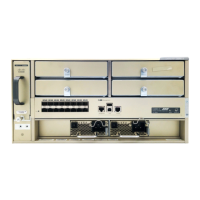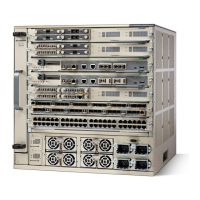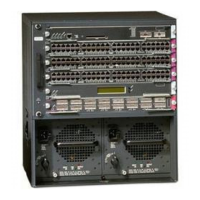Step 3
Check the terminal documentation to determine the baud rate. The baud rate of the terminal must match the
default baud rate (9600 baud) of the console port. Set up the terminal as follows:
•
9600 baud
•
8 data bits
•
No parity
•
1 stop bits
Connecting the Uplink Ports
SFP and SFP+ Transceiver Modules
The SFP and SFP+ transceiver modules provide copper or fiber-optic connections to other devices. These
transceiver modules are field-replaceable and provide the uplink interfaces when installed in an SFP module
slot. The SFP modules have LC connectors for fiber-optic connections or RJ-45 connectors for copper
connections.
For Cisco SFP and SFP+ transceiver modules documentation, including compatibility matrixes, refer to this
URL: http://www.cisco.com/en/US/products/hw/modules/ps5455/products_device_support_tables_list.html
Installing SFP and SFP+ Transceiver Modules
Before You Begin
For cable specifications, see Appendix B, “Connector and Cable Specifications.”
Observe these precautions:
Class 1 laser product. Statement 1008Warning
•
Do not remove the dust plugs from the SFP transceiver modules or the rubber caps from the fiber-optic
cable until you are ready to connect the cable. The plugs and caps protect the module ports and cables
from contamination and ambient light.
•
Removing and installing an SFP transceiver module can shorten its useful life. Do not remove and insert
any SFP transceiver module more often than is necessary.
•
To prevent ESD damage, follow your normal board and component handling procedures when connecting
cables to the switch and other devices.
For installing SFP or SFP+ modules from the modular port card, see the Installing SFP and SFP+
Transceiver Modules in the Port Card, on page 67 section.
Note
Catalyst 6880-X Switch Hardware Installation Guide
48 OL-30827-02
Installing the Switch
Connecting the Uplink Ports

